EPFL
Latest
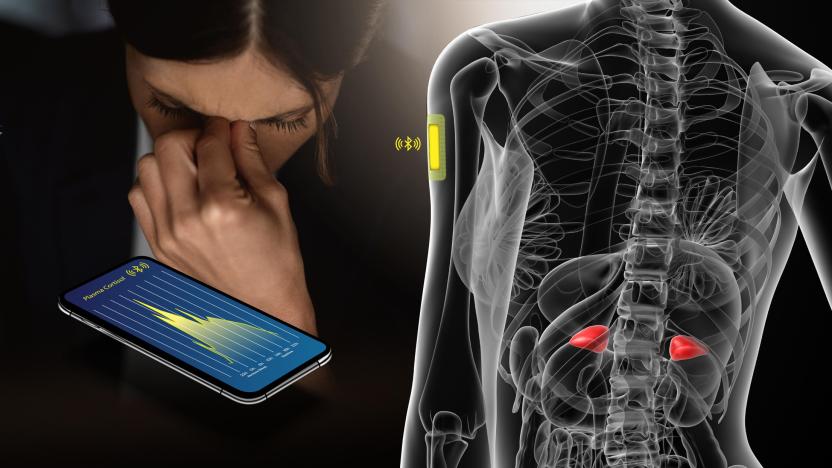
EPFL engineers create a chip that detects stress levels via sweat
Engineers from the Swiss Federal Institute of Technology Lausanne (EPFL) have developed a wearable sensing chip that can measure the concentration of cortisol in sweat.
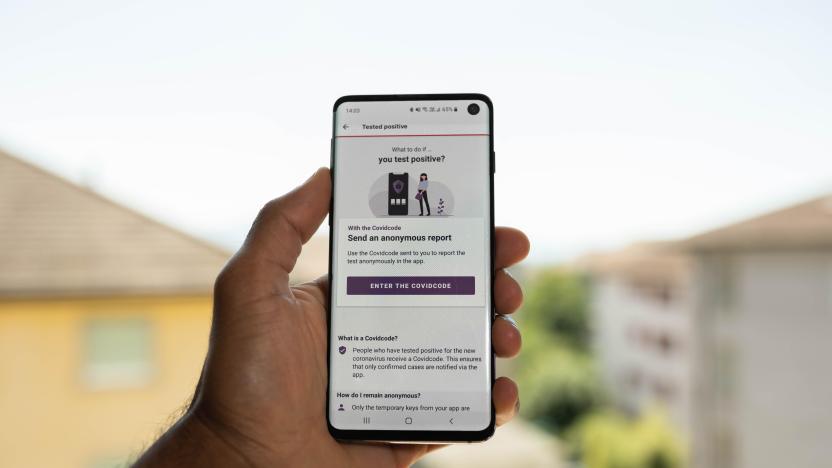
Switzerland pilots a contact tracing app using Apple and Google's tech
Switzerland is piloting a COVID-19 contact tracing app that uses the Apple-Google framework.
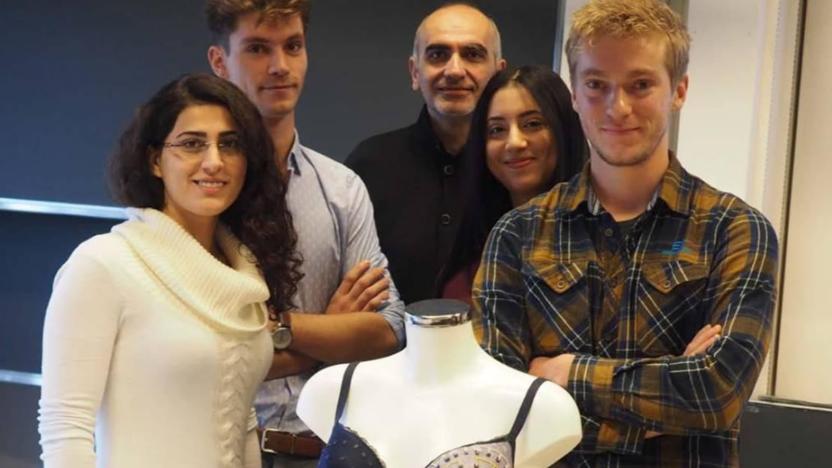
Students develop a smart bra for early breast cancer detection
Students from the Swiss university EPFL have developed a smart bra designed to detect breast cancer in its earliest stages. They believe it's the first piece of clothing that can be used for cancer prevention. They even claim that it's comfortable and that the tech is "nearly imperceptible."
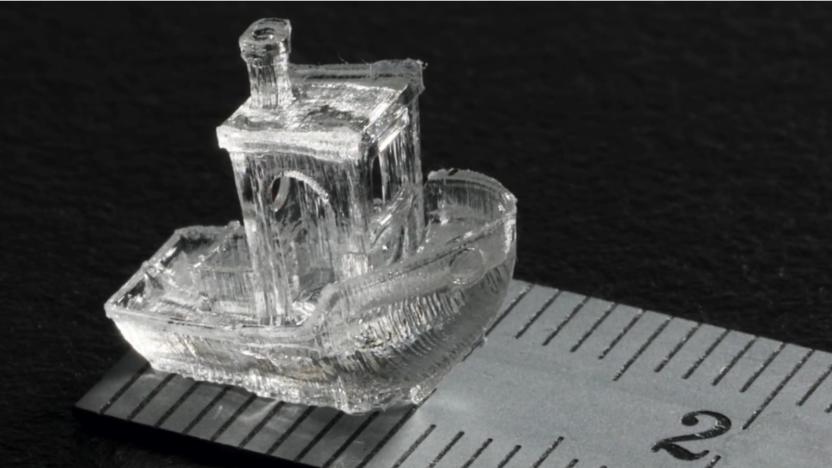
Researchers find a way to 3D print whole objects in seconds
When you think of 3D printing, you probably imagine a structure being created layer by layer, from the bottom up. Now, researchers from Switzerland's Ecole polytechnique fédérale de Lausanne (EPFL) say they have developed a completely new way of creating 3D objects that offer remarkable resolution "in record time."
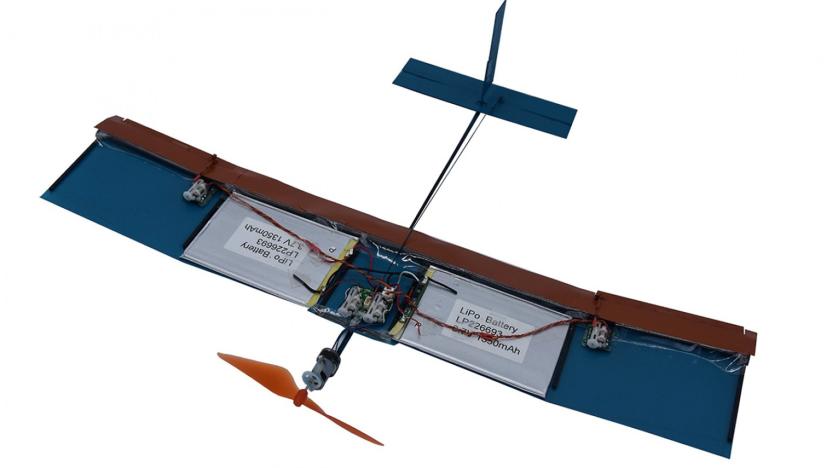
Bird-inspired wings could help small drones fly four times longer
Small drones seldom last more than half an hour in the air due to their inefficiency. They frequently have short, thick wings that help them survive wind gusts, but are terrible for range. However, scientists might have a way to make drones last: borrow another cue from nature. Researchers at Brown University and EPFL have developed a bird-inspired wing design that can deliver just under 3 hours of flight for a tiny 100g (3.5oz) drone, four times what you'd get from comparable fliers, without sacrificing stability. Effectively, it recognizes that common wisdom surrounding wings doesn't apply when the wingspan is a foot or less.
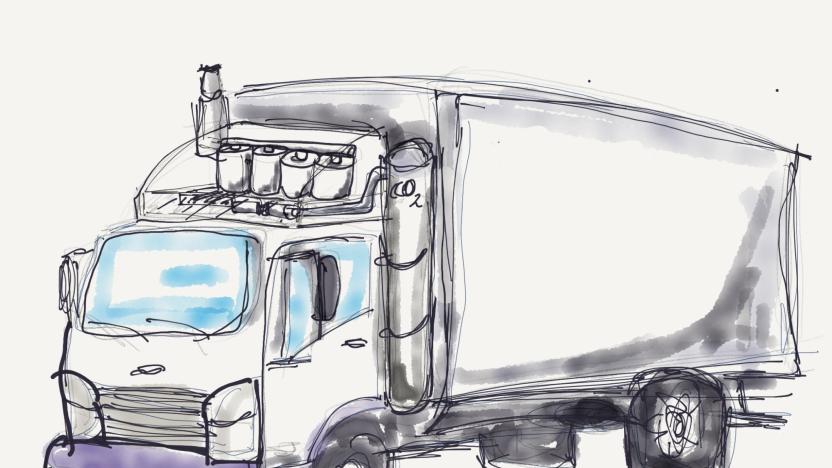
Proposed CO2 capture system could reduce truck emissions by 90 percent
A significant chunk of carbon dioxide emissions come from the transportation sector, and within Europe nearly 40 percent of transport emissions come from trucks. Now, researchers at the Swiss Federal Institute of Lausanne (EPFL) have come up with a new concept for capturing carbon dioxide from truck exhausts which could reduce emissions by up to 90 percent.

Next-gen hearing implants could overcome inner ear damage
Many hearing implants won't help people with inner ear damage or auditory nerve problems, but the brainstem implants that do frequently do an incomplete job. Soon, however, there might be a far better solution. Researchers have designed a conformable electrode implant that should more effectively counter inner ear damage. It uses body-safe, resilient platinum for electrodes, but overcomes the metal's usual stiffness thanks to micron-level machining inspired by kirigami paper cutting. Once wrapped in silicone, it's highly conductive but can cling tightly to the auditory brainstem and send more targeted signals than in conventional implants.

Scientists bioprint living tissue in a matter of seconds
Bioprinting holds great potential for repairing injuries, testing drugs or replacing whole organs, but it's currently limited in complexity, viability and speed -- you can't just create tissue on a whim. Soon, though, it might be a matter of crafting whatever you need when you need it. Scientists at EPFL and University Medical Center Utrecht have developed an optical system that can bioprint complex, highly viable living tissue in "just a few seconds." It would represent a breakthrough compared to the clunky, layer-based processes of today.
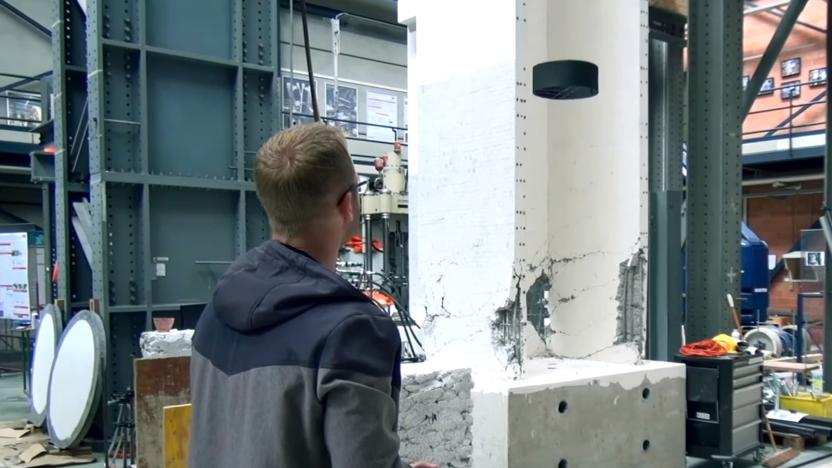
'Flying saucer' drone can fly twice as long as regular models
The biggest problem with drones is their lack of endurance, but Swiss researchers have developed a new model that helps reduce that problem. Eschewing the regular four blade design, EPFL startup Flybotix's drone has just two propellers, letting it fly twice as long as regular models. It's just as easy to pilot as a standard UAV, but the increased longevity and small size makes it ideal for inspecting dangerous areas or doing search and rescue in a collapsed building, for instance.

Scientists unveil 3D microscope that visualizes cells without damaging them
There's a problem in cell biology research: to study what happens inside a cell, it has to be destroyed. When scientists use a traditional microscope to observe a cell, they use stains -- chemicals that color parts of the cell to make them visible. However, these stains cause damage and kill the cell prematurely. This might not be a problem for long though, as scientists at the Swiss Federal Institute of Technology (EPFL) have developed a technique to look inside living cells without damaging them.
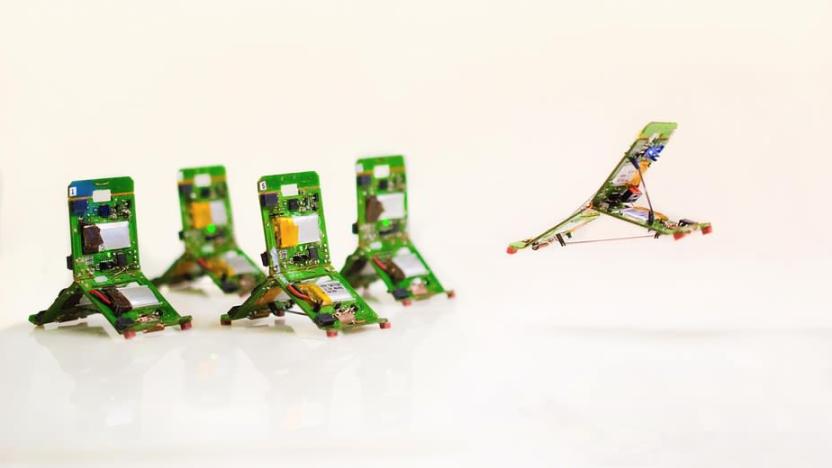
Jumping ant robots use teamwork to overcome obstacles
If you've ever marveled at a team of ants working together to carry a huge morsel of food or navigate around objects, you've seen how effective a collective intelligence made up of simple individual units can be.

AI can simulate quantum systems without massive computing power
It's difficult to simulate quantum physics, as the computing demand grows exponentially the more complex the quantum system gets -- even a supercomputer might not be enough. AI might come to the rescue, though. Researchers have developed a computational method that uses neural networks to simulate quantum systems of "considerable" size, no matter what the geometry. To put it relatively simply, the team combines familiar methods of studying quantum systems (such as Monte Carlo random sampling) with a neural network that can simultaneously represent many quantum states.

Holographic tech could be key to future quantum computers
A breakthrough in studying light might just be the ticket to the future of quantum computing. Researchers at EPFL have found a way to determine how light behaves beyond the limitations of wavelengths, opening the door to encoding quantum data in a sci-fi style holographic light pattern. The team took advantage of the quantum nature of the interaction between electrons and light to separate beams in terms energy, not space -- that let them use light pulses to encrypt info on the electron wave and map it with a speedy electron microscope.

These tiny drones can lift 40 times their own weight
If you ask these tiny drones, "Do you even lift, bro?" you will get a resounding yes. Researchers at Ecole Polytechnique Fédérale de Lausanne (EPFL) in Switzerland and Stanford University have developed a line of small flying bots that can move objects that are 40 times their weight.

Lightweight gloves help you touch virtual objects
One factor that prevents virtual reality from being truly immersive is the fact that you still can't feel what you see. A group of scientists from EPFL and ETH Zurich is trying to change that by creating a pair of high-tech gloves that "provides extremely realistic haptic feedback." According to the researchers, their creation, which they've named "DextrES," isn't like the other VR gloves also currently in development. First, it's lightweight and doesn't have a bulky exoskeleton or heavy components. It's made of nylon, is only 2 mm thick and weighs 8 grams per finger. Plus, it needs very little power that it could eventually run on a battery.

HPE supercomputer will help simulate mammalian brains
Scientists are about to get a serious assist in their quest to simulate brains. HPE has deployed Blue Brain 5, a supercomputer dedicated to simulations and reconstructions of mammalian brains as part of the École Polytechnique Fédérale de Lausanne's Blue Brain Project. The system is based on HPE's existing SGI 8600 (above) and packs a hefty 372 compute nodes between its Xeon Gold, Xeon Phi and Tesla V100 processors, not to mention a whopping 94TB of memory. More importantly, it's flexible -- Blue Brain 5 has four configurations to prioritize different computing tasks, and it can host subsystems geared toward relevant tasks (including deep learning and visualization) while operating as a cohesive whole.

Virtual reality could be the answer to treating phantom pain
People who become paraplegics due to a spinal injury usually have to deal with more than just losing the feeling in their legs. They also have to battle excruciating phantom pain, which doctors can't cure with medicine. Now, scientists from the École polytechnique fédérale de Lausanne (EPFL) have found a way to alleviate the pain they feel using a pair of fake legs and the magic of immersive virtual reality.
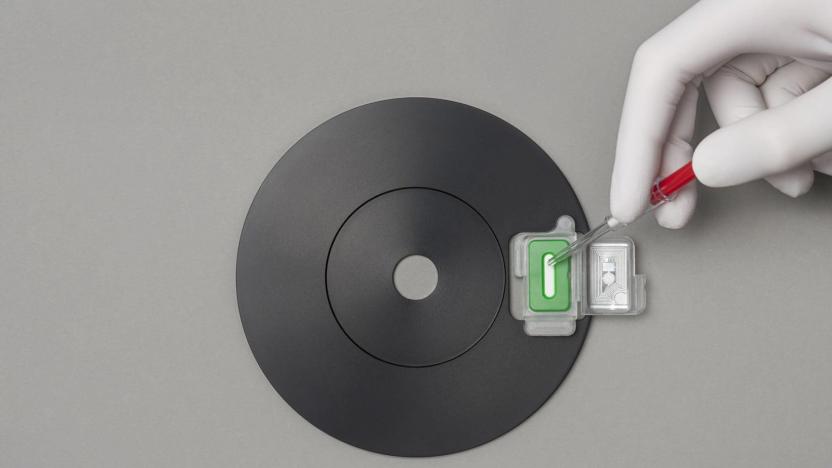
Five-minute allergy test passes the FDA's scrutiny
A few years ago, researchers from the Swiss Federal Institute of Technology in Lausanne (EPFL) started developing what they eventually dubbed the "world's most rapid" allergy test. Now, that test has received the FDA's approval and will start telling you what you're allergic to in as fast as five minutes next year. Abionic, the EPFL spinoff that took over the test's development in 2010, created the abioSCOPE platform and its accompanying single-use test capsules to be able to detect your allergies with just a single drop of blood.

Networked self-driving cars are smarter and safer
You know what's better than one self-driving car on the road? Two, because then they can pool resources. Vehicle-to-vehicle (V2V) communication isn't anything new, of course, but researchers at Switzerland's federal institute of technology, EPFL, are taking things one step further. By wirelessly connecting the LIDAR, sensors and navigation systems of two cars in convoy, both can get a fuller picture of the world around them.
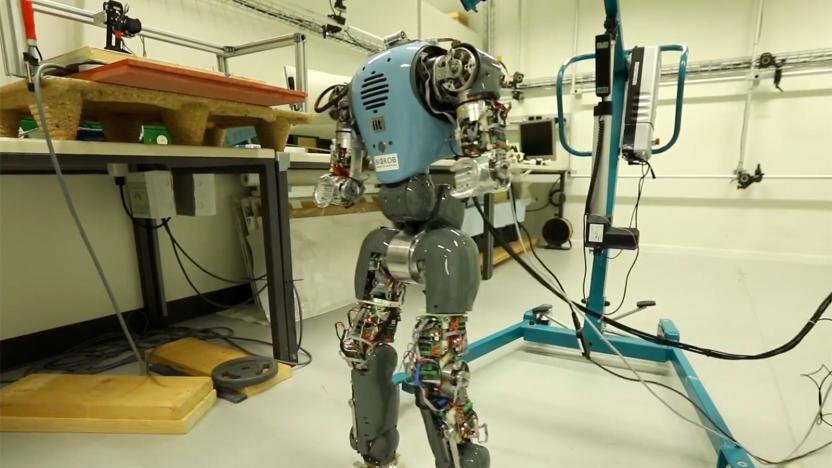
Robots learn to walk naturally by understanding their bodies
The challenge with bipedal robots isn't so much getting them to walk at all (although that's sometimes a problem) as it is getting them to walk naturally. They tend to either step cautiously or quickly run into trouble. Swiss researchers think they can do better, though: they're working on COMAN (Compliant Humanoid), a headless robot designed to master walking. The automaton is more graceful through a combination of more flexible, elastic joints and a control algorithm that helps the bot understand its own body.







